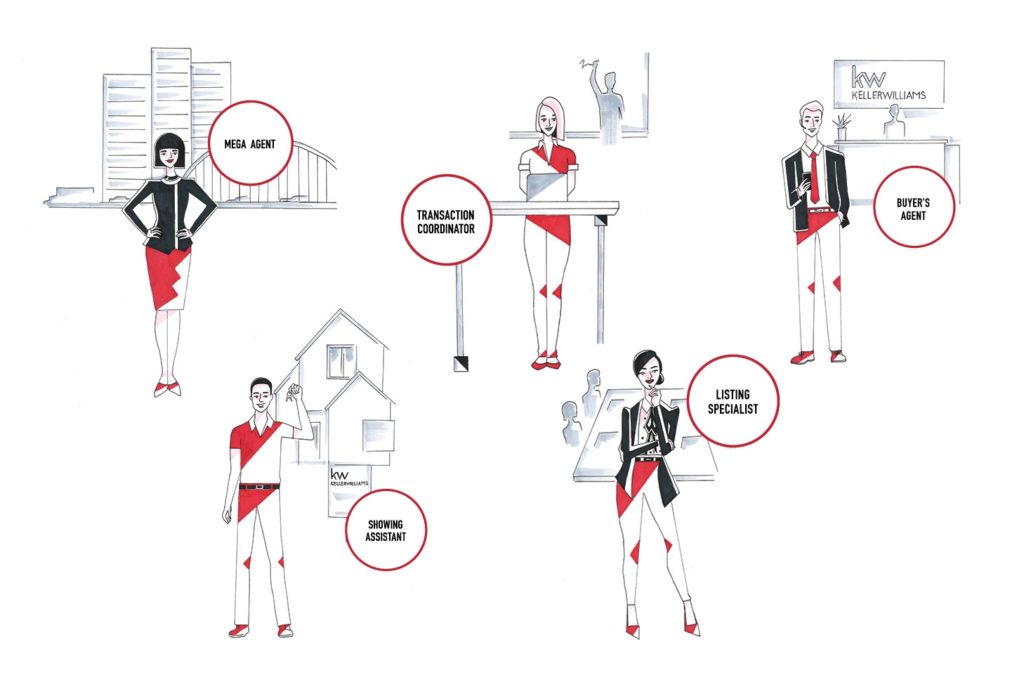
There is only so much a single person can accomplish in one day, no matter who they are. Members of the Dan Holt Team of the Greater Springfield market center know this well. By harnessing the power of leverage and implementing the showing assistant model, their production is skyrocketing.
Dan Holt, chief executive officer of the team, got his start in real estate in 2009 after leading a successful career in building and development. Only able to handle so many tasks and clients at a time, Holt knew he needed leverage if he was going to increase production.
Following the MREA organizational model, he hired Jen Davis, after several administrative hires. Davis, who was with a different brokerage at the time, originally just wanted to get her real estate license for personal investment reasons. Her decision to join the Dan Holt team as a buyer’s agent in 2012 took her on a much different trajectory.
As the only buyer’s agent on the team, in her first year, Davis closed 49 units. This year, she – along with her two showing assistants – is on track to close between 225 and 250 units on the buyer’s side, making up half of the team’s total production. Holt and his listing specialists will close the other half on the seller’s side: an accomplishment Holt credits to bringing Davis on board.
“If I didn’t leverage and put other people into their 20 percent, I would have never gotten into mine,” Holt says.
The 80/20 principle suggests that 20 percent of an agent’s activities will account for 80 percent of their results. As Holt and Davis continued to increase production on both sides of the business, their need to increase leverage rose as well. It was time to hire again.
A Team of Masters Is Built
Nicole Bower was next to join the Dan Holt Team as the transaction coordinator, where she is tasked with handling phone calls, administrative duties and ensuring contracts are processed and client needs are met along the way; activities which had previously kept Holt and Davis away from their listing and showing appointments.
With Bower on the team alone, Davis’s production jumped from 49 closed units to 72 units in one year.
Emily Baker, the director of lead generation and operations, manages the inside sales agent (ISA) and outside sales agent (OSA) on the team. She has streamlined lead generation with scripts and training, a role close to her heart as a former corporate sales trainer. Baker’s impact is evident. With her on board, Davis’s closed units jumped from 72 to 110 and listings taken increased from 150 to 225 with listings sold growing from 89 to 140.
“Emily taught me how to say ‘no’ or she would say ‘no’ for me,” Davis says about how Baker helped protect her time.
The following year Baker was hired, Holt and Davis each hired a KW MAPS Coach and implemented a showing assistant model.
“Showings were interfering with my ability to negotiate contracts,” Davis says about the time constraints of working beyond her 20 percent.
Hiring Showing Assistants
Davis set out to find a showing assistant. Unfortunately, her first hire didn’t work out. “I hired someone I wasn’t ready for,” she says. “I still liked have the initial face-to-face contact with the client at that point.” After involving both KW MAPS Coaches and Holt, she learned how to let go, trust and hired a showing assistant in January 2016.
“I was focused on her numbers and how I could change her life, not my numbers. I told myself that I was going to help her hit every goal she has.” Leading by example, Davis’ showing assistant followed her on every appointment for a month, soaking it all in – and then she was off.
However, with the lead generation team working so hard at filling up the pipeline, Davis soon found herself back to showing homes again. So, in June 2016, a second showing assistant was hired. With both showing assistants on the team for a full year in 2017, they closed 198 units on the buyer’s side, up from 182 units in 2016 – again making up approximately half of the total team production.
So, what is the key to their showing assistant model?
Holt says it is hiring talent for that position with the expectation of mastery, not entry level. Davis adds it is about timing as well. “A showing assistant should be leverage only added after you have invested in leveraging on the administrative side,” she says. “The mistake people make is they try to leverage the showing first. It should be last.”
“We have had zero turnover since we began the model because we make sure that the showing assistants feel emotionally invested in their 20 percent and the team as a whole. Create a position they are proud of and they will stay.”

High Standards = High Rewards
Holt says that it is their team culture of productivity and strong support that has helped fuel their performance. “We only want to work with the most talented people who do an exceptional job and are natural leaders.”
By methodically using the Career Visioning process and making sure they are putting people in their top 20 percent every day, Davis says the Holt Team specializes in career satisfaction.
“It’s rewarding to see people go from living paycheck to paycheck to being able to buy a home, car, education – whatever – with no concern. Our standards are high … in turn, the rewards are high.”